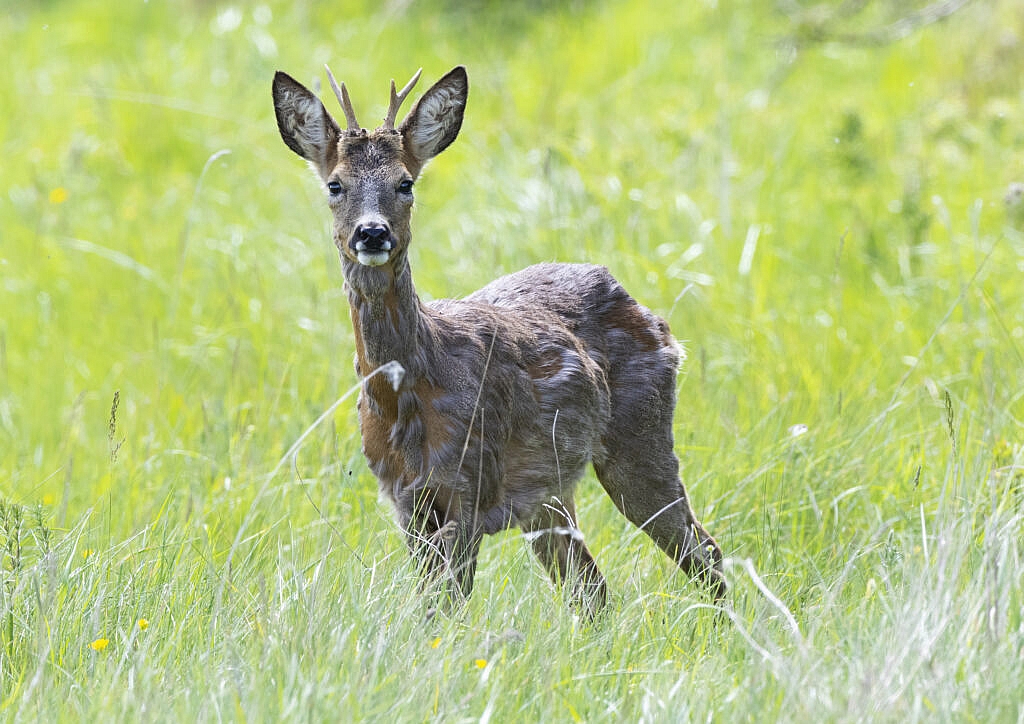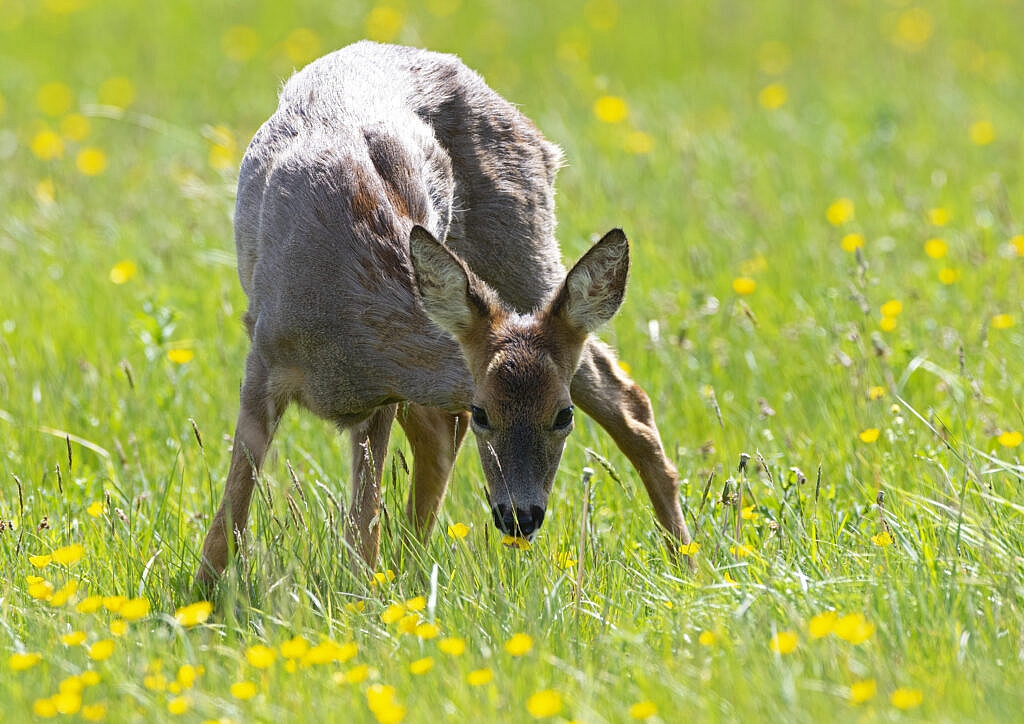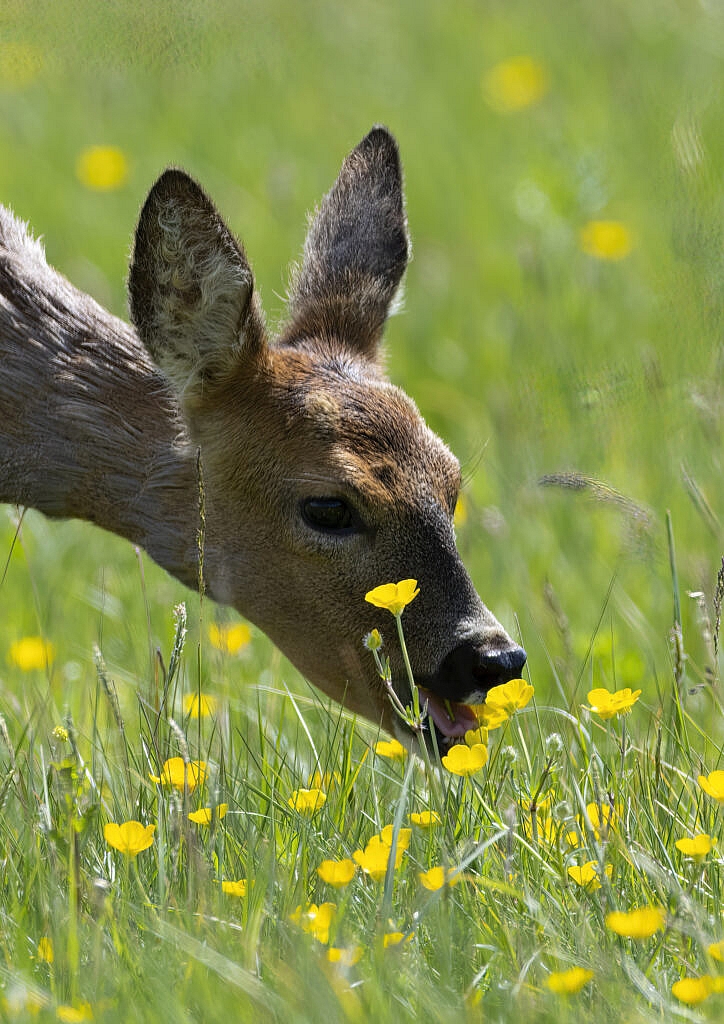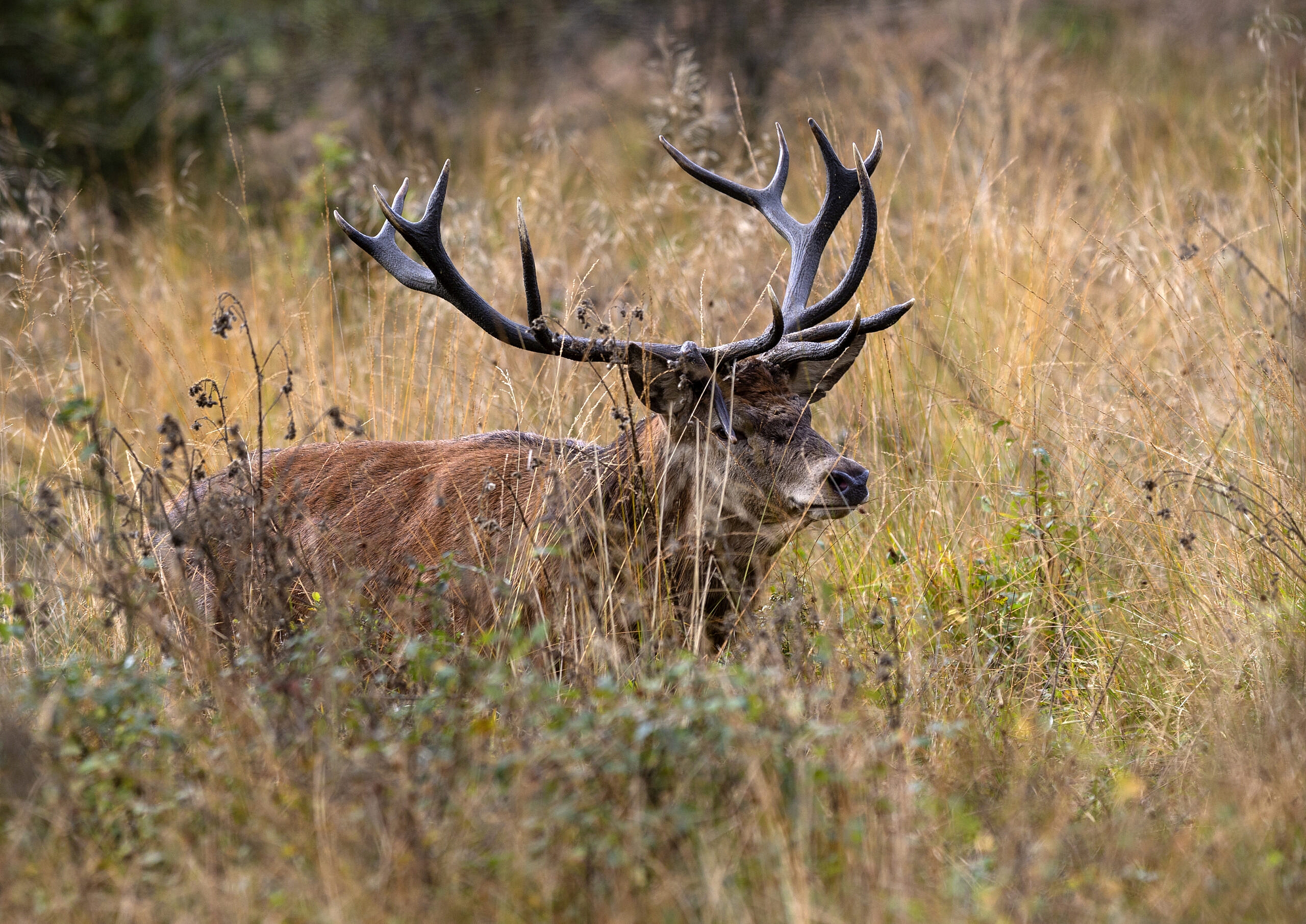It’s said that humans like kittens and other young animals in part because we’re programmed to respond to the eyes of babies, which are large in proportion to their small heads when they are born. Large eyes are something we key in on, that arouse our protective instincts. Whether that’s true or not, some animals get an automatic “aaaaah,” rather than an automatic “uuurrrgghhh”. One of those is the doe, the female deer.
Is that the reason why I, like a great many people, have a soft spot for deer? I don’t know, but I know that my heart beats a little faster at the site of a pair of distant grazing deer. And that’s what they were when I started out on this walk: a distant pair of brown blobs. I could tell they were deer, but that this range I couldn’t be sure of the species, although they were out in the middle of a large expanse of grassland, and where I live, that’s almost certainly roe deer. Roe deer look a little like Llamas, in that they have relatively long necks. This pair looked even more like Llamas than usual, because they had the long, shaggy coat that roe deer adopt in the winter. Now that spring was in full flow, they were slowly losing this long winter coat, and the result was that they were looking particularly scrappy and dishevelled, as large chunks of long fur had been torn out to show their smooth sable summer coat underneath.

The deer were indeed roe deer. Ageing deer is hard, but these were clearly youngsters, probably two or three years old, based on the buck’s ‘pedicles’ or antler-bases. They were grazing close to the fence that borders the main track around this nature reserve, so I had no choice but to keep walking slowly towards them. Deer are skittish creatures, and the usual experience that I have of them is that they will run away long before I get anywhere near to them. But I have learned that you can get close to roe deer – often very close indeed – if you’re prepared to be patient, and use a little fieldcraft. I had the good fortune on this day to be downwind, which stopped my human scent reaching the deer early on, and causing them to flush and run. I was also wearing camouflage pattern clothing, which I tend to do routinely these days, not so much because it enables me to get close to wildlife that I’m trying to see, as to make sure that I don’t disturb it. But neither being downwind, nor wearing camouflage clothing, will help you get really close to wild deer. To do that takes a lot of patience.
And so over the next hour, I moved slowly along the path towards the deer. Every now and then their heads would come up and they would stop grazing. This is a sure sign that I’m approaching their ‘safe distance’, the distance within which the deer start to worry. Stay outside of the safe distance, and the deer are confident that they can run away from you before you can possibly get to them, and so they will happily continue grazing. Break the safe distance, and they start to fret a little. Their heads will come up and they will stop eating so that they can keep an eye on you. At this point, I always stop, and do nothing. What I then do is look away from them. Predators can’t afford to lose track of their prey so they will normally be locked on, laser-focussed on their targets. Looking away is what prey animals do, to make sure that there is nothing sneaking up on them. The deer will then amble away from you, rather than spooking and running away from you. Usually, they will move just a hundred yards or so further along. When they do that, and start eating again, I start to move slowly towards them again.

There is another trick that I’ve learned over many years photographing deer. Millions of years of evolution have fine-tuned the senses of deer to predators. If the deer perceives you as a predator, it will run away. But one thing that clearly identifies you as harmless is having a limp. And so as I started to approach the deer, I started to limp slightly and stop often. I never walked briskly, I never walked directly towards the deer, and I never made any loud sounds or sudden movements. In short, I play-acted the part of an old herbivore, an animal that is about as harmless as it can be. The deer slowly classified me as being no threat to them, and let me get gradually closer to them. In the end, by the time we had almost run out of fence line for them to follow, they were entirely happy with my presence – and had even started to actively walk towards me. They weren’t seeking me out, just seeking out particularly tasty patches of buttercups to eat that were near to me, but they certainly weren’t afraid of me. They could hear the clicking of my camera’s shutter, and knew perfectly well that I was there, but by now we had established that crucial basis of trust between us. The last time I did this, I actually managed to sit down with the herd I was following when they settled.
I hadn’t set out to photograph deer that morning, and I never did see the small bird I was actually trying to take a picture of, but my day was far from wasted. If there is anything as good as being trusted by a completely wild animal, then I don’t know what it is. These two young roe deer and I shared another half an hour close together, before a dog walker appeared on the same track, and the deer remembered their flight instinct and took off. In that half an hour or so, we weren’t deer and human; we were two fellow travellers on planet Earth, both enjoying a sunny spring afternoon. And so I was able to take this photograph, of a deer who knows that her photograph is being taken, but who is sufficiently relaxed to let her head go down, bury her muzzle in the grass, and continue eating. And that, for me, is about as good as a wildlife encounter gets.








Social Profiles